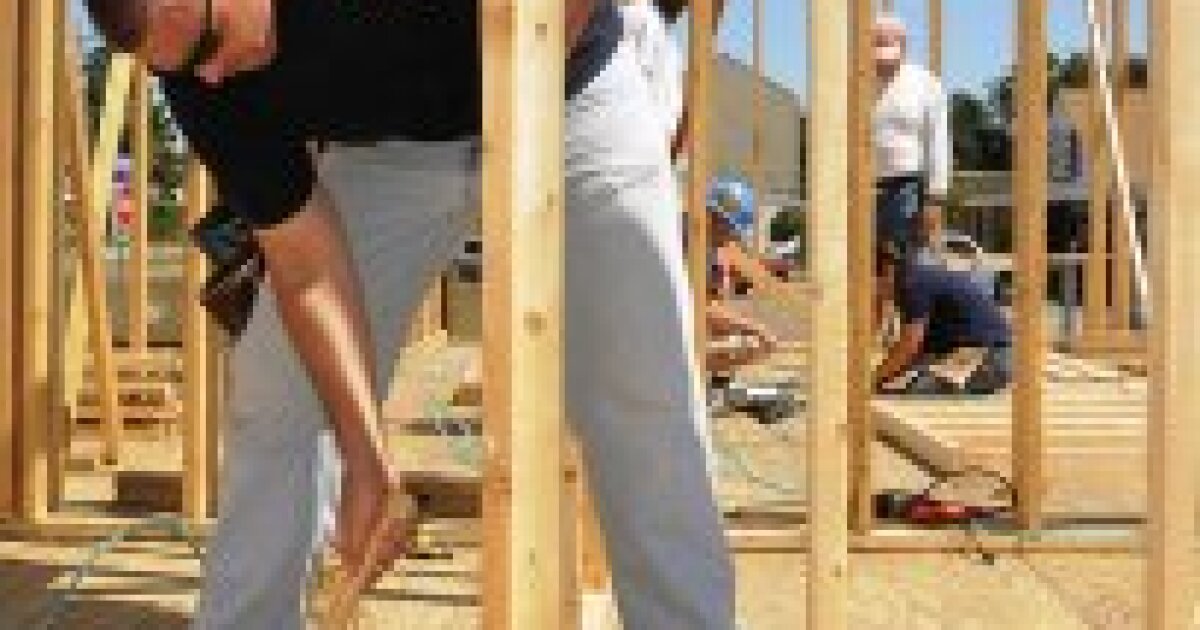
Homebuilder stocks are on pace for their biggest annual advance in over a decade, a remarkable feat considering how rising interest rates sent mortgage rates soaring in 2023. Now that bond yields are coming down, Wall Street expects that rally to carry over into 2024.
When rates climb, homebuilders typically feel the pinch. This year was an anomaly as tight inventory coupled with insatiable demand outweighed high borrowing costs. As a result, shares of homebuilders soared, with the group on track to finish 2023 at a record high. The sector is up 79%, far surpassing the S&P 500 Index's 23% gain.
And regardless of whether the Federal Reserve orchestrates a soft or hard landing for the US economy next year, its expected rate cuts have homebuilders poised to continue to outperform the broader market, said Seaport Research analyst Kenneth Zener, who accurately predicted the sector's performance for two straight years. Zener currently has a buy-rating on all but one homebuilder stock.
JPMorgan analyst Michael Rehaut is also bullish on the sector heading into 2024, noting that his recent earnings estimate revisions and increased price targets may "ultimately prove conservative." Elsewhere, Bank of America analysts led by Rafe Jadrosich sees improved supply chain dynamics into next year, with lower rates lifting sales and margins as builders reduce incentives. And Citigroup's Anthony Pettinari asserts that "despite the bull run in stocks, the market is not fully pricing in '24 rate declines."
Even if lower rates boost inventory and shift sales from new to existing homes, builders are well-positioned, Zener said. Existing homeowners who may finally decide to sell their homes will be looking for a new place to move, further fueling demand. It's a "zero-sum game," Stuart Miller, Lennar Corp.'s co-chief executive officer, said during the company's earnings call last week.
"Mortgage rates went to 8% and demand was still OK," Oppenheimer & Co. analyst Tyler Batory said in an interview. "If rates are 5% or 6% then what does demand look like? You've got to think it looks much better."
According to Seaport's analysis, the sector has outperformed the S&P 500 when rates are falling in nine out of 10 instances since 1957, except for periods where there's high resale inventory. For now, there's no expectation for supply to outpace demand.
However, BTIG analyst Carl Reichardt's warns that the sector may have hit a ceiling.
"The majority of the stocks I cover are fairly valued," Reichardt said, adding that investors will need to see better-than-expected earnings growth in the long term.
The next catalyst will be the spring season — a prime time for buying and selling — when interest rates will either be stable or falling, he said.
"If rates fall and continue to fall, it's entirely possible that the assumptions Wall Street's built about sales rates could be too low and builders could see better business, therefore better earnings," said Reichardt.
To be sure, homebuilders are early cycle stocks, meaning initial bearish economic or rate revisions will disproportionately affect the group — an unavoidable risk, Zener said. Therefore, if recession risks increase he sees a brief two- to three-month drawdown before a large rally, reminiscent of 2023.



